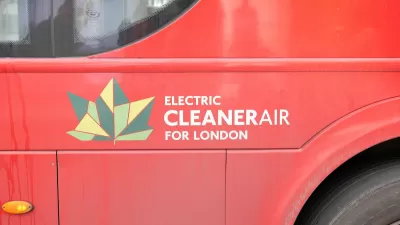As economies begin to reopen around the world, some cities are taking action to prevent widespread gridlock.

"As coronavirus lockdowns loosen around the world, city leaders are scrambling to address a new problem: the prospect of gridlock worse than before the pandemic," write Somini Sengupta and Brad Plumer. "From Shenzhen to Milan to Austin, officials are trying to coax people back onto buses and subways and reclaim road space for cyclists and pedestrians."
The consequences of fewer people riding transit or riding bikes will be bad for congestion, pollution, and injuries and fatalities caused by collisions, according to the article. But many cities are struggling to mitigate the oncoming traffic.
More than 30 large cities coming out of lockdown, including Hong Kong, Shenzhen, Oslo and Geneva, recorded more congestion on their roads in mid-June compared with the same period last year, according to data from TomTom, a navigation company. Other early evidence suggests that driving is increasing faster than public transit use as people step out of confinement and move around again.
The article surveys the globes for some of the transportation planning responses to the growth in automobile travel as public transit struggles, including the examples of Bogotá, London, Seoul, Beijing, and Austin. Here are the details on Austin's efforts:
In Austin, Tex., the city has expanded its system of public shuttles that can be reserved through a mobile app by riders who aren’t well served by existing bus lines. Officials are also drawing up plans to better integrate existing bus and rail lines with the city’s bike-share system by offering unified ticketing and apps. They also plan to eventually replace the city’s 1,000 shared bikes with electric versions that make travel easier in the sweltering Texas heat.
FULL STORY: Lockdowns Tamed Road Traffic. Here’s How Cities Aim to Keep It Down.

Alabama: Trump Terminates Settlements for Black Communities Harmed By Raw Sewage
Trump deemed the landmark civil rights agreement “illegal DEI and environmental justice policy.”

Planetizen Federal Action Tracker
A weekly monitor of how Trump’s orders and actions are impacting planners and planning in America.

How Atlanta Built 7,000 Housing Units in 3 Years
The city’s comprehensive, neighborhood-focused housing strategy focuses on identifying properties and land that can be repurposed for housing and encouraging development in underserved neighborhoods.

Report: Zoning Reforms Should Complement Nashville’s Ambitious Transit Plan
Without reform, restrictive zoning codes will limit the impact of the city’s planned transit expansion and could exclude some of the residents who depend on transit the most.

Judge Orders Release of Frozen IRA, IIJA Funding
The decision is a victory for environmental groups who charged that freezing funds for critical infrastructure and disaster response programs caused “real and irreparable harm” to communities.

‘Clybourne Park’ Sets Stage for Housing Equity Discussions
Clybourne Park, a play exploring race, real estate, and community tensions, can set the stage for discussion on the lasting impacts of housing discrimination, gentrification, and the fight for affordability.
Urban Design for Planners 1: Software Tools
This six-course series explores essential urban design concepts using open source software and equips planners with the tools they need to participate fully in the urban design process.
Planning for Universal Design
Learn the tools for implementing Universal Design in planning regulations.
Caltrans
Smith Gee Studio
Institute for Housing and Urban Development Studies (IHS)
City of Grandview
Harvard GSD Executive Education
Toledo-Lucas County Plan Commissions
Salt Lake City
NYU Wagner Graduate School of Public Service





























